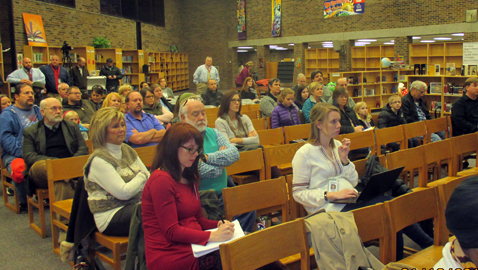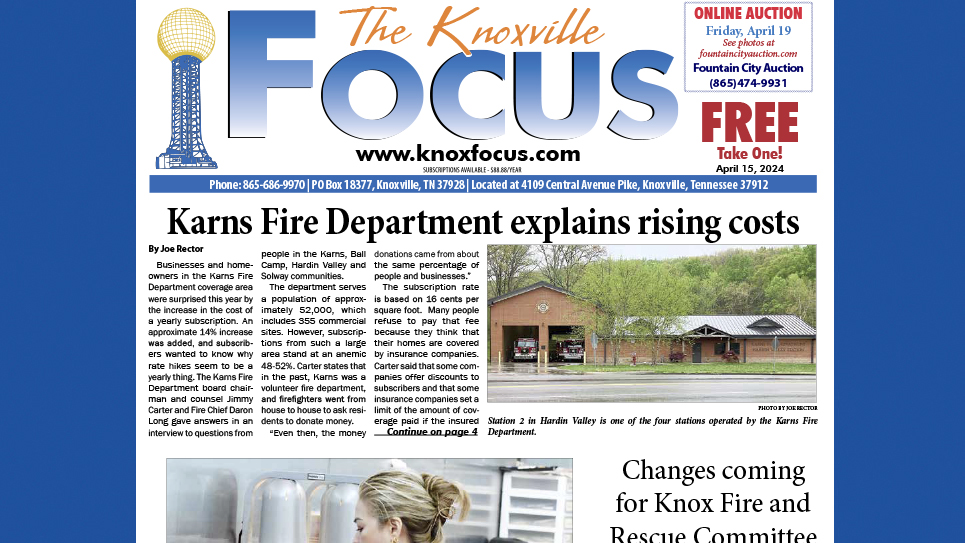By Pete Gawda
Concerned citizens, county commissioners, school officials, parents and students gathered in the South-Doyle Middle School library Tuesday night for the third of six public rezoning meetings concerning the new Gibbs and Hardin Valley middle schools. This particular meeting was primarily concerned with the effects of rezoning for the new Gibbs middle school.
“We’re building the best school system in the South,” Interim Superintendent Buzz Thomas said in his opening remarks. “We don’t just teach academics in Knox County Schools, we are teaching kids how to be good citizens.”
Russ Oaks, chief operating officer for the school system, said the purpose of the new middle school at Gibbs was to move the school closer to the Gibbs community because currently the middle school is at the far end of the zone. He said that before putting students in the school they must design a zone plan.
Oaks said the new Gibbs school will have 51 classrooms, an auditorium that will seat 600 and a gymnasium that will seat 400.
He said there are five considerations in determining school zones. Those factors include school capacity, transportation, and geographic and manmade boundaries. Another determining factor is congruent middle and high school boundaries. This means that as much as possible students from an elementary school are kept with their peers as they progress to middle school and on to high school. Another factor is parent responsibility zones. Parent responsibility zones are those areas one mile from elementary schools and one and a half miles from middle and high schools where transportation is not provided.
Mr. Oaks said that as a result of these public meetings a tentative zoning plan will be announced in the spring for community feedback. Then in May the new zoning plan will be voted on by the board of education. The new schools will open in the fall of 2018.
Holston, Halls, Carter, Whittle Springs, Gresham, Vine and South-Doyle middle schools could possibly be affected by the rezoning for Gibbs.
Some of those schools are over capacity, others are under capacity. The goal is to try to balance attendance among the schools. As a result of rezoning, Oaks said school zones will shift to the south and east. One of the challenges is to develop a cohesive community around the new Gibbs school.
“We are talking about people not numbers,” Thomas said in recapping some of the things heard in earlier meetings. “We should try to keep families and neighborhoods together.”
“We don’t have a problem with new schools,” one citizen said. “We want to keep African-American schools in our community. We want our students to be able to walk to school. We want the same privilege as white students.”
In response to a question Oaks replied that there has been no discussion of closing any schools. In response to another question Oaks replied that there has been no discussion of Vine not being a charter school.
One citizen expressed concern about students being bussed across the river.
“I am hearing a concern for kids going a long way on the bus,” Thomas said. “We will do everything we can to keep that from happening.” He said racial disparities exist when kids of one race ride buses more than kids of another race. Thomas said that while school officials do not want to have deliberately segregated schools neither do they want to sacrifice neighborhood schools.
“We want this to work and we are going to work with you until we get it right,” Thomas said in conclusion.







